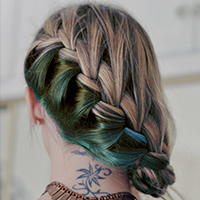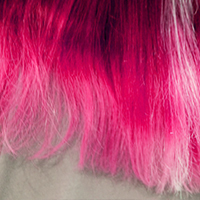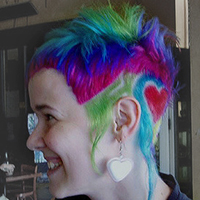



Techniques and Designs of Today
In 2016, people are doing amazing things with their hair, but it often comes at a price. Now, 80% of women and a little over 50% of the population uses hair dyes to alter their appearance.
As expected in the twenty first century, different people take their hair in different directions. Some people use bleaches and dyes to mimic the natural hair colors of others. Some use dyes to change the color of graying roots to match their natural hair color. Others dye their hair one or more bright colors to make a statement. Finally, many people dye their hair back to their original hair color so that they don’t get awkward roots when they are done with whatever their latest look was.
Recently, individuals have produced some intricate hairstyles, combining color with cuts, curls, and braids. One common trend is dip-dyeing, or fading long hair vertically between two or more colors. It can be from a natural tone to a bright color, or from one bright color to another. Some people even include the whole rainbow in their hair.
Another trend has been dyeing roots, and ends separately, but very deliberately, so that, when French braided, the braid is a different color, or colors alternate through the braid rhythmically.
For a very bold statement, some people have been splitting their hair straight down the middle and coloring each side a different color. The effect is very Cruela Devil-esque, but usually involves much brighter colors than black and white.
Finally, blocking has become very popular. For this, chunks of hair are dyed different colors based on placement both horizontally and vertically. The two-toned split mentioned above is one of the simpler examples of blocking. Because hair has a lot of fluid movement, color blocks tend to present as very colorful hair. But coupled with a designed buzz cut, color blocking is now being used to create geometric patterns and novelty motifs in spots of hair, right against the scalp.
Though there are really cool things to do with hair dyes, the process is intensive and can create some unhealthy side effects. Hair can be colored professionally or at home, but either way, it can take anywhere from 2-16 hours, depending on the intricacy of the design. It is also practically impossible to do on your own without dyeing your hands, ears, or face. Dark hair requires bleaching so that lighter colors can show up. The more bleach and the more dye used on hair, the weaker and the dryer it gets.
In addition to damage to the hair itself, many people have bad skin reactions to the chemicals in dyes. People endure weeks of blisters and scabs in order to dye their hair. Some dyes claim to be more gentle than others, but all dyes instruct testing on a smaller area of the hair, near the scalp to see if there will be a reaction.
Some doctors are even looking into whether hair dyes can be linked with blood and bone cancers like lymphoma and leukemia. So far some tests have made a connection, while others have shown no connection, so results are inconclusive. With so many people using hair dyes now, the health risks are really important to know about and avoid.